Traps and Vents
by Andy Boyd
Today, down the drain. The University of Houston presents this series about the machines that make our civilization run, and the people whose ingenuity created them.
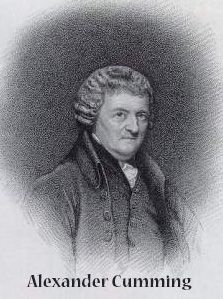 I recently found myself tucked under my bathroom sink disconnecting the drain pipe. Drain cleaner had failed to hasten the speed with which the sink drained, and I was checking the bottom of the trap to see if something was lodged there. For those who don't spend much time under the sink, the trap is the lowest point you see in the pipe. Shaped like the letter U, water flows down into the trap, then back upward again before making its way into the wall and out of the house. First patented by Scottish watchmaker Alexander Cumming in 1775, the trap is one of those wonderfully ingenious ideas that often gets overlooked.
I recently found myself tucked under my bathroom sink disconnecting the drain pipe. Drain cleaner had failed to hasten the speed with which the sink drained, and I was checking the bottom of the trap to see if something was lodged there. For those who don't spend much time under the sink, the trap is the lowest point you see in the pipe. Shaped like the letter U, water flows down into the trap, then back upward again before making its way into the wall and out of the house. First patented by Scottish watchmaker Alexander Cumming in 1775, the trap is one of those wonderfully ingenious ideas that often gets overlooked.
The trap will catch small jewelry items if they fall into the sink, but that's not its primary purpose. That purpose is to leave a small amount of water trapped in the pipe. As I was reminded when I disconnected the trap, all pipes lead to the same place - the sewer. And the sewer isn't known for smelling like a rose garden. If water wasn't trapped, sewer gasses would be free to escape into the house through the sink. And it's a very real issue, as my nose was confirming. The trap's also a deterrent for any small creatures who may have found their way into the system.
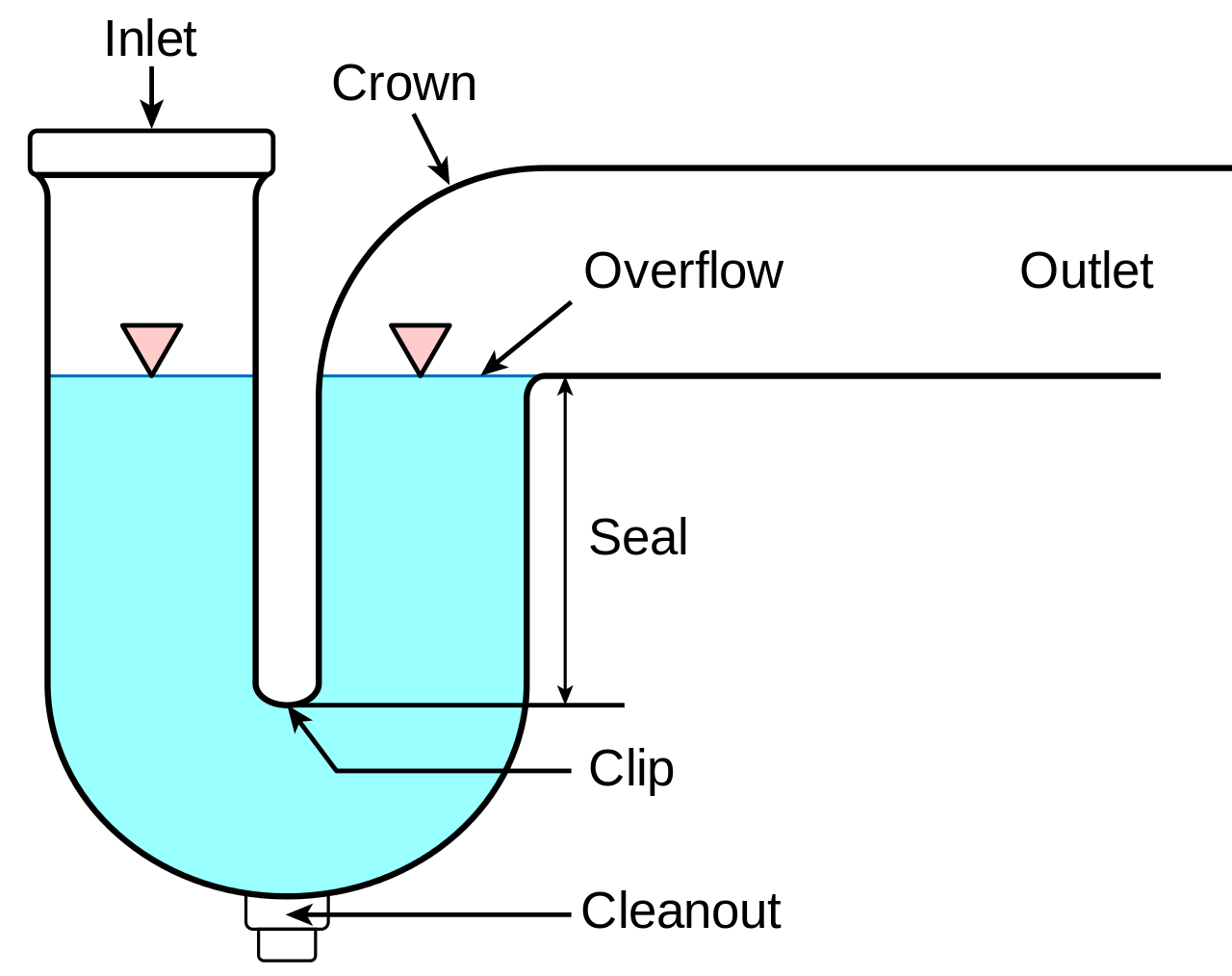
P-Trap. Photo Credit: Wikimedia
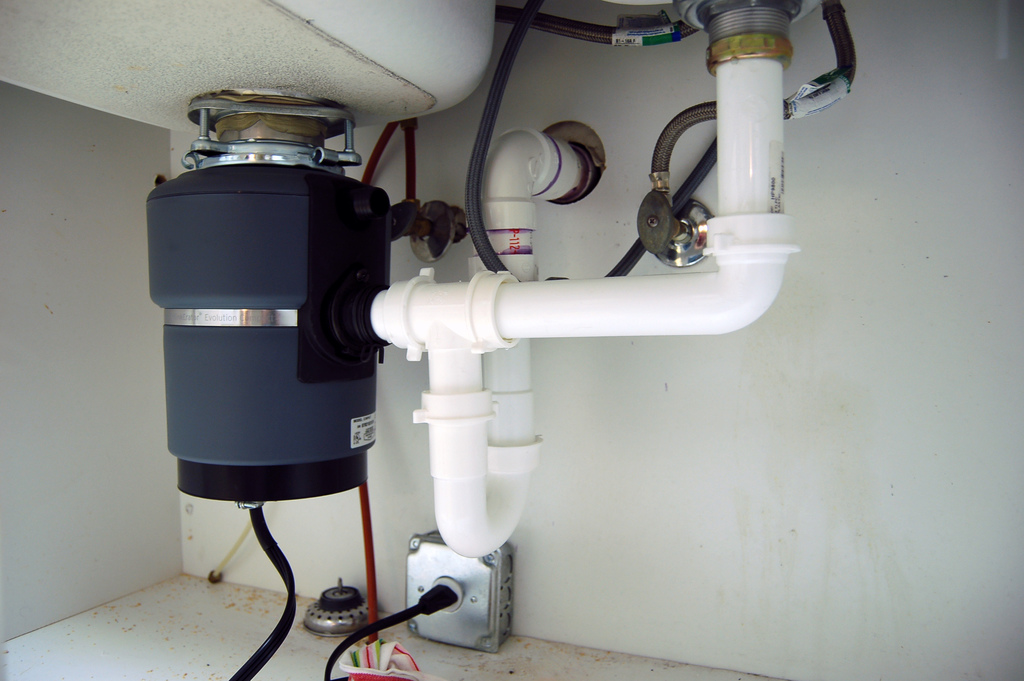
P-Trap2. Photo Credit: Flickr
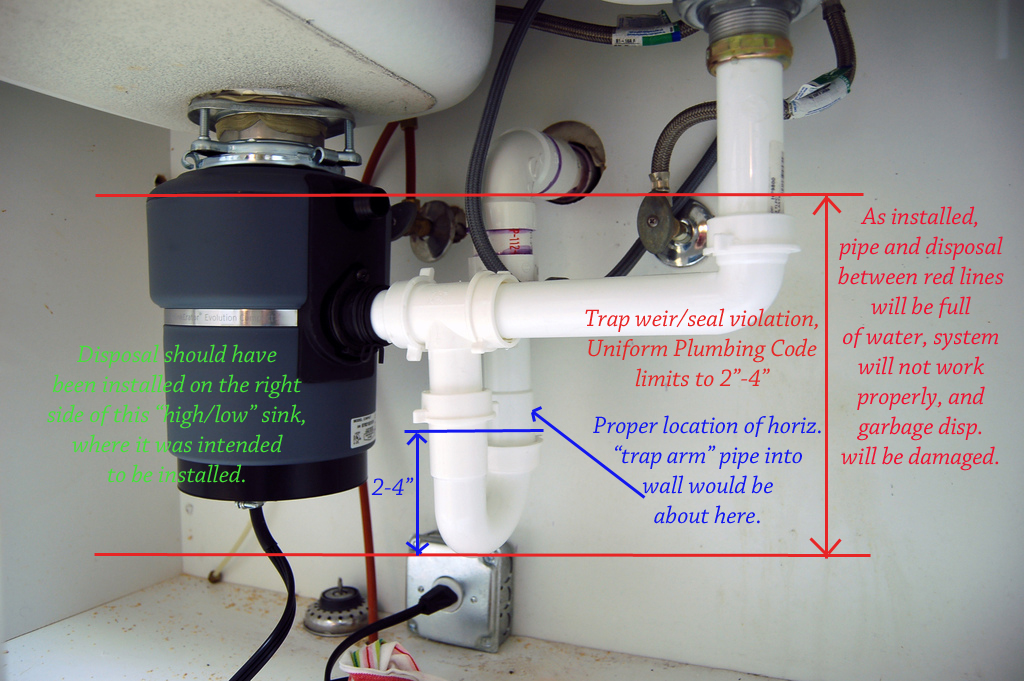
P-Trap with text - Thanks to listener Steve Tiedman, a municipal building inspector in suburban Minneapolis, who pointed out that the disposal in this picture is improperly installed. Photo Credit: Flickr
Though you may not have noticed, every plumbing fixture has a trap, from bathtubs to toilets. You can often see the shape of the trap in a toilet's porcelain form. And unlike your sink, you can see the water exposed on one side of the trap.
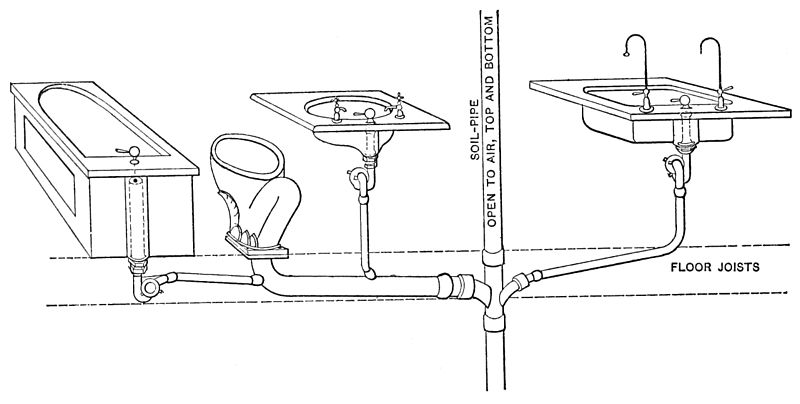
Waste Water Pipes. Photo Credit: Wikimedia
It turns out the trap is only half the solution to unwanted gasses. As water flows downward into the sewer, it can create a pressure differential between the two sides of the trap. The pressure on the side below the trap can drop lower than the side above. This in turn can cause the water in the trap to be siphoned down the pipe, leaving it empty. The solution to this problem is as simple as the trap itself. The drainage pipes in a home's walls don't lead just downward, but upward, too. One or more of the many pipes protruding from a home's roof are part the plumbing. With air free to reach both sides of the trap, they'll both remain at local atmospheric pressure and siphoning's no longer an issue. The vent also provides an escape for sewer gasses, where they disperse high above your home into the air.
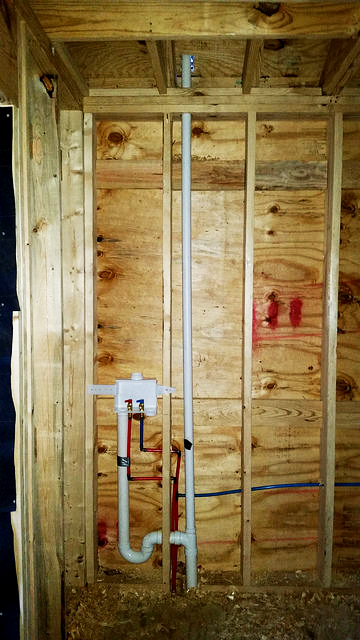
Vent. Photo Credit: Flickr
When the plumbing system's working properly, the only way a trap can become dry is through evaporation. So if you notice an unpleasant odor coming from a rarely used plumbing fixture, the fix might be as easy as running the water for a minute to fill the trap.
On top of the simplicity of traps and venting, two other traits of a home's wastewater plumbing system shine forth as beacons of good engineering. First, there aren't any moving parts: no motors, switches, or anything else to wear out or break. Second, the system is powered by gravity – the last word in clean, reliable energy. If only every engineering problem could be solved so elegantly.
I'm Andy Boyd at the University of Houston, where we're interested in the way inventive minds work.
(Theme music)
The essay makes mention of traps looking like a U since this is the most visually evocative. The most common traps are actually referred to as P traps since the extended arm running to the wall makes the U look like a P. Traps that vent through the floor, which are less common due to current building codes, are shaped like the letter S and are referred to as S traps. There are other trap designs as well.
Ernest Hart. 1882. The Sanitary Record: A Monthly Journal of Public Health and the Progress of Sanitary Science. London: Smith, Elder and Company. Vol 3, new series: p. 53. See also, from Google Books, Click here. Accessed February 15, 2017.
Cumming image, courtesy of Wikimedia.
This episode was first aired on February 16, 2017